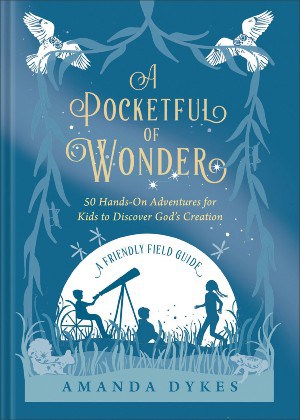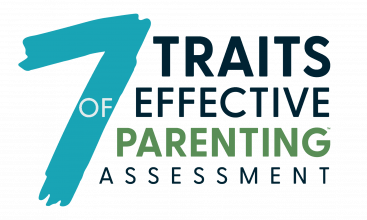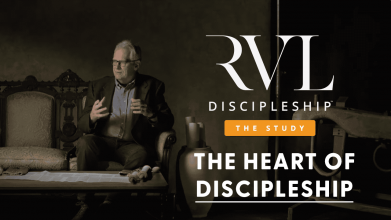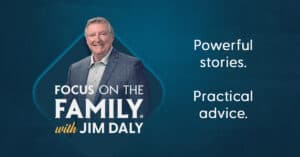Preview
Amanda Dykes: Over and over again, when we’re looking at God’s creation, what we see is if God can do this, He can do anything. Nothing’s impossible for Him, and they’re learning all about possibility.
End of Preview
John Fuller: That’s Amanda Dykes, and she’s with us today on Focus on the Family with Jim Daly, sharing insights about how you can help your children experience the wonders of nature. Thanks for joining us. I’m John Fuller.
Jim Daly: You know, John, I’m thinking about the old road trips that Trent and I would take, uh, just going to school or picking ’em up from somewhere and coming back at sunset and looking at the sunset and going, wow, look at the painting that God gave us tonight. You know, it’s amazing. Those things stuck and we still talk about that today now that they’re in their twenties. They’re going, “Dad, you remember when you saw that great sunset?” But you know, here in Colorado, we do have fabulous sunsets, and that’s something you could point your kids to, to say, “Look at God’s nature.” And, uh, we’re gonna have a great discussion today with our guest, Amanda Dykes, about being intentional as a parent to point out God’s nature. And then your kids have a structure in which to understand what’s going on around them. And, you know, at Focus, we’re all about that. We want to equip you to be the best parent you can be to help your kids to thrive in Christ. That’s the goal. And, uh, resources and books and podcasts, we have a parenting assessment. It’s free. Just take that. We’ll show you where you’re doing some things really well and where you may need a little work.
John: Mm-hmm. And we’ll have links to, uh, the assessment and all the resources at focusonthefamily.com/broadcast. And Amanda Dykes is a mom of four children. She’s written a number of Christian fiction books, and today we’re gonna be turning to a nonfiction book she’s written. It’s delightful. It’s called A Pocketful of Wonder: 50 Hands-On Adventures for Kids to Discover God’s Creation, A Friendly Field Guide. And you can find the details on our website.
Jim: Amanda, welcome to Focus.
Amanda: Thank you. I’m so glad to be here.
Jim: Yeah, it’s fun.
Amanda: Thank you for having me.
Jim: I want to ask you, what gave you the idea? How did you start to notice this is something that is good, the wonder of creation?
Amanda: Right.
Jim: And how did you then say, “I’m gonna get my kids to awaken in this area.”
Amanda: Yes, I love that word, awaken, for it.
Jim: Yeah.
Amanda: It’s welcoming and just kind of indicates that spark that we’re trying to light. And as far as where the idea came from, it started many years ago with one of the novels that I was writing, Set the Stars Alight. It has a similar theme of wonder. And the whole time I was writing it, I kept thinking, this is such a natural and powerful topic for kids and families. I wish there could be a kid’s book along the same lines. And I thought maybe it would be a picture book or something like that, but as the years went by, just different things happen and ideas shift and change over time, it started to become something quite different, more hands-on, immersive, built around the idea of connection and not just memory making, but invitation to examine who God is and what He’s doing through His creation. So it really started to take shape into what it became in 2020. Um, I had just given birth to our youngest son and, you know, the world was kind of in upheaval. A lot of chaos, a lot of unknowns.
Jim: Called COVID.
Amanda: Yeah.
Jim: (Laughs) Yeah.
Amanda: That’s the one. So it was on my heart, and I think it’s on so many parents’ hearts and really everyone’s heart, just the world can feel so broken, it can feel so heavy. And how do we help kids or really anybody see the hope in the midst of it all? And at the same time, I was taking a lot of walks, as a lot of people were during that time (laughs), and with my younger two kids in the stroller. These little snatches of verse or just kind of poetic language would pop into my head about whatever we were looking at. And kids love to look at things. You just kind of follow their breadcrumbs as far as what to look at, whether it’s ants building an ant hill or tractors, or-
Jim: I’m liking this. This is good.
John: (laughs).
Amanda: Yeah, it’s all good stuff.
Jim: I like that list.
Amanda: Ants and tractors, both builders.
Jim: (laughs).
Amanda: Um, and I think the first time it happened, we were just passing under a tree so ordinary and the breeze swept through and it just, it was, sounded almost musical, just the shaking of the leaves.
Jim: Yeah.
Amanda: And so this line of verse popped into my head, and I said it to my kids, just playful language. I think that young kids especially are drawn to rhyme. It’s a little bit musical, it’s playful, it’s delightful. And that was it. It was just, that was fun.
Jim: Yeah. No, that’s good.
Amanda: You know, we moved on and that was that. But then it kept happening, like we were looking at things and these lines of verse would pop into my head and I thought, maybe I should do something with this. Maybe-
Jim: Why do you think, yeah, why do you think the parents struggle to recognize that? It’s like we get older, we get blinders to stop and just look at nature.
Amanda: Right. I think that a lot happens. I think our brains fill up with a lot of things, a lot of concerns, demands on our time. And we become used to the world. We become used to the universe.
Jim: We don’t notice those things.
Amanda: We don’t notice those things.
Jim: Yeah.
Amanda: And you were talking about the sunset earlier. It happens every night.
Jim: Yeah.
Amanda: And we’re so blind to it sometimes because we’re accustomed to it.
Jim: Yeah. Let me, let me talk about, uh, the benefits of nature.
Amanda: Sure.
Jim: Actually, ask you to talk about it, ’cause you mentioned that in the book, just the, uh, qualities that God has put in this. You recognize nature, you breathe better, you do so many things physiologically better.
Amanda: Mm-hmm.
Jim: Describe the research that universities and others have done in this space.
Amanda: Well, there’s so much research just about even sunshine, vitamin D, what it does for us, the health benefits about it, balancing us. And I think honestly what happens is mentally we get outside of ourselves. We step into something that’s bigger than us. We step into God’s creation, and it makes room for us to see life is bigger. Hope is bigger than whatever I’m facing. And when you look at the majesty of what God’s created, we see His power and we’re reminded, that’s the power that’s fighting for me and carrying me in what I’m doing or what I’m facing. So things began to fall away. We start to see ourselves a little bit smaller. And I don’t mean that in a demeaning way. I, it’s almost comforting just to go, I’m one person on this great big planet. And it’s humbling and also exhilarating when you think, I’m one person, but God came for me. I’m just one small person. And His creation proclaims that. It proclaims the glory of God, and it brings us outside ourselves again.
Jim: Right. But even like recovery from surgery and other things, uh, the medical field now is recognizing that-
Amanda: Right.
Jim: … being in nature, taking walks-
Amanda: Yeah.
Jim: … actually helps you to recover faster. Right?
Amanda: That’s, yes, absolutely. And, and there’s science behind even what happens in your brain when you’re walking because you’re engaging both sides of your brain. So it helps-
Jim: Well, that’s most people, maybe not me (laughs).
Amanda: You’d be surprised. Um, and so it helps you work out problems and just, because you’re engaging everything and think creatively in a way you might not if you’re just sitting stagnantly. So-
Jim: But, but again, the irony that God has this kind of, uh, put forward-
Amanda: Mm-hmm.
Jim: And if we do it His way, I mean, even physical benefits, being in nature, observing nature.
Amanda: Right. Absolutely.
Jim: Being at peace, breathing a little deeper-
Amanda: Yes. Yeah.
Jim: … out there. I mean, it’s, it’s awesome that God has-
Amanda: It is amazing.
Jim: … given us that. Um, you know, we look at children today, young people, the CDC Center for Disease, uh, you know, they do a lot of research, and children are struggling right now.
Amanda: Mm-hmm.
Jim: I mean, I think I saw something from the CDC that 50% of kids between, I think the ages were like 15 and 24 have really high depression-
Amanda: Mm-hmm.
Jim: … and anxiety right now. As much as 50%.
Amanda: Wow.
Jim: So when you look at those kinds of things, do they have a benefit if, if we can-
Amanda: Absolutely.
Jim: … get them outdoors and-
Amanda: Yeah.
Jim: … learn some of these things and… Yeah.
Amanda: Yes. Absolutely. There’s even, there’s emerging research about where this is stemming from, where the anxiety’s coming from. And so much of it is tied to the increasing presence of screens in our lives and in kids’ lives. And it’s getting introduced to them earlier and earlier. And when you think of what they’re meant for, which is deep experience and real things, it’s not just that they’re staring at a box. Um, it’s not just that they need to be unboxed. It’s what are they missing out on? What is this robbing them of? It’s robbing them of discovery, of joy, of hands-on learning. And these lessons we learn in nature about how things are going to be okay even when there’s turmoil, even when there’s hard seasons, there’s storms, there’s so, it’s, creation is laden with these metaphors that we can learn from and draw strength from. And when kids don’t have that opportunity to experience it, they’re left to whatever’s in their head when they start facing the hard things. And so, of course it breaks our hearts to hear that and to hear these statistics coming out, and the solution is so beautiful. And it’s so simple, because it could feel intimidating like this Goliath thing that we’re facing. But what defeated Goliath? It was one small stone and a great deal of faith. So when we take these small moments, like the small stones, and our faith and we offer it and we invite kids into it and we just kneel down to wherever they are and we look at things together and we learn, we just approach it with an openness of spirit, we offer them a balance that they can draw from in their own spirits when they start to feel that pressing in of anxiety or depression or just the thoughts they don’t know what to do with. And I think a big part of it is they don’t know how to deal with their thoughts ’cause they’ve never been left alone with them.
Jim: Yeah. You know, for parents, and this is perhaps the most insightful thing that we need to capture today, I feel like in life, I mean, we as parents, we get busy.
Amanda: Mm-hmm.
Jim: We kind of look past what are some very simple things that we can do, and we don’t capture it. We let the screens take over.
Amanda: Mm-hmm.
Jim: Uh, but to be intentional about this as a parent, to say, okay, rather than screaming about the screen time-
Amanda: Mm-hmm.
Jim: Do something.
Amanda: Exactly.
Jim: Say, “Okay kids, we’re going for a hike. Okay, we’re gonna go look at something, we’re gonna go do something.” Make it positive.
Amanda: Right.
Jim: But it’s so easy for us to just do life.
Amanda: Mm-hmm.
Jim: You know, we’re just doing it.
Amanda: Mm-hmm.
Jim: And we’re not thinking creatively about-
Amanda: Right.
Jim: … how to get the kids engaged. That’s on us as parents.
Amanda: Mm-hmm.
Jim: It’s not the kids’ job.
Amanda: Absolutely.
Jim: It’s our job, especially when they’re younger, to kind of give them an interest in these areas of nature.
Amanda: Right. And I think you hit it right on the head when you’re talking about, it’s not about screaming about the screen time. We know it’s a problem. We don’t, you know, it’s not gonna be solved by screaming about it.
Jim: Right.
Amanda: It’s that, it’s that same quote that I love of don’t curse the darkness, light a match. And that’s what you’re doing when you, as you said, create opportunity for them to adventure and do something different. You’re opening doors instead of boxing them in with rigid rules, and it’s an invitation.
Jim: We’ve laid the groundwork, so let’s go for the mud.
Amanda: Okay.
Jim: These are some of the ideas you’re-
Amanda: Get into it.
Jim: You’re gonna find in this great book.
Amanda: (laughs).
Jim: A Pocketful of Wonder. So playing in the mud (laughs).
Amanda: Yep. Yep.
Jim: What is it, how do you do that?
Amanda: How do you play in the mud? Well, you take some water.
Jim: Yeah.
Amanda: You take some dirt.
Jim: You gotta find some dirt.
Amanda: Yeah. Well I think the beauty of this is, and this is the heart of the book, is um, you use what’s around you, wherever you live, whether it’s city, country, forest, anything, you use what’s around you. And so in the case of mud, I watch my kids, we have something in our yard called Mud City, which is a glorified mud hole. Like it’s just a pit that’s been dug and they put the hose in it and they make mud. And every day that they’re out there in Mud City, they create something different. Sometimes it’s a sand castle, sometimes it’s a village, sometimes it’s a seat made out of dirt, and it’s free play. And they’re learning all about potential that you have these raw materials and anything can happen. And so you’re giving them the gift of possibility. You’re giving them the gift of anything’s possible. And that’s the heart of the book. Over and over again, when we’re looking at God’s creation, what we see is if God can do this, He can do anything. Nothing’s impossible for Him. And they’re learning all about possibility. So mud, you know, simple recipe, dirt, water, and a lot of fun. And we don’t have to be afraid of that ’cause sometimes we think that’s pretty messy. It’s okay. Sometimes fun is messy, and it’s a worthy price to pay. We can clean it up.
Jim: Yeah. The good thing about Mud City is it goes right down with the hose (laughs).
Amanda: Exactly. Exactly.
Jim: You could take it down and make it again.
Amanda: Yeah.
Jim: You, uh, mention in the book, uh, coming out of a museum with the kids and using that moment, what was going on when you left the museum?
Amanda: It was one of those moments where we were just going about our day doing our normal things and we, we came out of a children’s museum and it had snowed. So we’re tromping through the snow, and again, as adults we tend to forget, we just, it’s just ordinary or sometimes we might even think of that as a nuisance. The kids are having so much fun just kicking snow and hearing the slushy sound, and so we came up with this poem as we’re walking across the parking lot that’s in the book now about stomp that snow and slosh that slush. So it just played with the sound-
Jim: (Laughs) Right.
Amanda: And it sounded like the fun that it is, and it’s in a parking lot. And so it demonstrates, it’s everywhere using exactly what’s in front of us. It does not have to be elaborate. We don’t need a long supply list. There’s joy right in front of us.
Jim: Yeah.
Amanda: We just step into it.
Jim: You had some other snow-related, uh, suggestions. What are one or two of those?
Amanda: Right, right. So the book gives ideas for hands-on things you can do with snow. And of course, snow, it talks all about the free play things you can do that kids don’t need any assistance with (laughs), whether it’s snow angels or snowball fights or building things like igloos, slides, all of that.
Jim: (laughs).
Amanda: Um, or if you wanna do something a little bit more structured or hands-on, um, snow painting. So you create paint out of food coloring diluted with water and they can either paint with it with paintbrushes or put it into little squirt bottles and spray it or squirt it like a ketchup bottle to make designs. And they could put a frame around it using tree branches, twigs, leaves, whatever’s around.
Jim: That’s a great idea.
Amanda: After that, snap a picture. You have a masterpiece and a memory.
Jim: Now, before we lose everybody listening in Florida-
Amanda: Yeah.
Jim: (laughs) Do we have like a, a non-snow thing?
Amanda: Yeah. Well, and even the cold weather activities, we tried to make sure to incorporate, like there’s one on frost, and so the activity there is something you could do inside creating frost on a tin can.
Jim: Oh, wow.
Amanda: So any, even our Florida friends, we don’t wanna forget about them-
Jim: (laughs).
Amanda: They can do it too. But yes, there’s activities for indoors during rainstorms, thunderstorms, times you can’t necessarily be safely outside. There’s activities for, um, beaches and even when you’re looking at things like the tide and what that is and the magic of the moon actually pulling an entire ocean. What if there’s a kid who has never seen the ocean and may not see the ocean? There’s alternate activities for what you can do inland-
John: Mm-hmm.
Amanda: … too and still see the wonder of it.
John: Yeah.
Amanda: Yeah.
John: This is Focus on the Family with Jim Daly, and today we’re talking about nature and the beauty of God’s design. And our guest is Amanda Dykes, and she has a terrific book called A Pocketful of Wonder: 50 Hands-On Adventures for Kids to Discover God’s Creation. You can get a copy of the book from us here when you stop by focusonthefamily.com/broadcast.
Jim: Amanda, those are kind of those wintry things.
Amanda: Mm-hmm.
Jim: Here in Colorado, We’ve got lots of opportunity to do that. You’re in the Sierra Nevadas-
Amanda: Mm-hmm.
Jim: So the mud hole and the snow and everything.
Amanda: Yeah (laughs).
Jim: I mean, we’re just blessed to be in places that provide that. We talked about what they can do in Florida, etc. But um, the wind is also something that most of us experience (laughs), to some degree.
Amanda: Mm-hmm.
Jim: How do you use wind to teach a spiritual truth?
Amanda: Right. And wind is a funny one ’cause it can feel like such a bother to us. It’s in our face getting us off course, it’s messing with our day, but it’s also really fun. You know, here’s this force that’s invisible that’s actually blowing kids. And you watch kids play with wind, they love it. They love putting their arms out, pretending they’re being blown away.
Jim: And paper airplanes (laughs).
Amanda: Exactly. Yes. So the wind poem was one of my favorites to write just to try and capture that sound of what it is. And then looking at the spiritual parallels, we can look at, when you’re standing in the course or the path of the wind and it hits you, what it’s doing scientifically is it’s splitting and coming around you and then it meets back up, and it’s called a wind eddy. And that’s what makes the twigs twirl after it comes together on the other side. So you can look at, you know, sometimes things are hard in life. It might feel like a windstorm metaphorically, but God can be doing big things during that time and He could be using you to change the course of a mighty force such as the wind just by standing firm. So there’s a lot you can draw from even a simple thing like a gust of wind.
Jim: I like that.
Amanda: Oh, good (laughs).
Jim: No, I like that. You know, another one-
John: It’s really good.
Jim: … is thunder and lightning.
Amanda: Mm-hmm.
Jim: And so, I mean, this may be, don’t send me tags to write me. I get it.
Amanda: (laughs).
Jim: But I, when we had, we’ve got good thunderstorms here in Colorado.
John: Mm-hmm.
Jim: And when the boys were younger, I would jump in our truck and say, “Okay, let’s go chase this storm.”
Amanda: We do the same thing.
Jim: And I mean, this one bolt of lightning hit right off of the truck, hit a tree. I mean, it like-
Amanda: Wow.
Jim: Destroyed this tree.
Amanda: Wow.
Jim: Just bam, it blasted. Troy went down into the well of the truck like, “Daddy, we gotta get outta here.”
Amanda: (laughs).
Jim: Trent’s pressing his face against the glass like, “That was so cool.” And uh, I mean, there’s no more powerful, uh, lesson-
Amanda: Right.
Jim: … than watching lightning hit a tree.
Amanda: Right.
Jim: Maybe you don’t want to be that close, but I get the point. But, uh, talk about thunder and lightning.
Amanda: (Laughs) Yeah.
Jim: That’s pretty powerful.
Amanda: It is powerful. I think it’s one of the most powerful forces and examples we have in God’s creation to look at, and it can feel unsettling and awe-inspiring to a child or to any of us really. So it’s a very natural medium for us to be able to talk about God’s power. So the thunder, for example, you can go as deep into the science as you want with your kids or as little into the science as you want. It’s still gonna be amazing ’cause it’s thunder, but it’s created from all these particles really ricocheting in the clouds and the movement of what’s going on. And the Bible even talks about mightier than the thunder of great waters is God on high. So we can draw from scripture to pull those parallels and it is great waters in a cloud, it’s a floating ocean, really is what’s going on. And it shows kids this is so powerful, it stops us in our tracks or makes you dive to the floor of the truck-
Jim: Of the truck, looking for safety.
Amanda: Yes. Yeah, exactly. Um, and as far as lightning, it’s fascinating. When lightning flashes, it’s five times hotter than the surface of the sun. So you can talk to your kids about how, for a brief moment, just an instant in time, somewhere in our world is hotter than the star that heats our world.
Jim: Mm-hmm.
Amanda: And it’s things like that that make you go, it just drops your jaw.
Jim: Yeah.
Amanda: And it makes you a little bit breathless and think, again, if God can do that, He can do anything.
Jim: Well, and then also the benefits of something so powerful. You, you mention in the book about how lightning provides nitrogen-
Amanda: Yeah.
Jim: … for the ground. That’s what helps-
Amanda: Absolutely.
Jim: … fruits and vegetables grow.
Amanda: Yes.
Jim: And plant life grow.
Amanda: Yes.
Jim: So it’s providing that.
Amanda: It is, and again, you can take that a step further. And that’s, we’re always looking, how do you take this a step further? What can we learn about God’s character through this? And we’re seeing His kindness even in something that on the surface can look scary or frightening, He’s providing for us. He’s providing nitrogen for the fruits of vegetables to grow, which in turn help us grow. And we’re inviting kids to step back and see not just the lightning, but the story around it.
Jim: Yeah.
John: Yeah, yeah. Amanda, as you’re speaking, I’m thinking of my wife who was a forestry major.
Amanda: Oh, wow.
John: And so when we go through a, like a forest area that had a lightning strike and there was a burn, she sees the potential for growth.
Amanda: Yeah. Yeah.
John: And, and that’s something that perhaps we would overlook. Oh, the lightning destroyed this.
Amanda: Yes.
John: But she sees all the new possibilities.
Amanda: Yes.
John: So there’s, there’s something there.
Amanda: Absolutely. In fact, I ran into a, is it an arborist? The guys who take care of the trees.
John: Mm-hmm.
Amanda: I ran into one in the parking lot of a hiking trail once, and it was after we’d had a terrible, terrible two years, two summers of wildfires. So it’s devastating, as you know, to look at something and see the barren land and it just feels like loss. Like, that’s all we see. And he told me that in the forest on that trail, he had smelled things he hadn’t smelled in 20 years. So this is, you know, this is his job, this is what he does. And he says, “Just wait. You’re gonna see things growing that we’ve never seen growing as long as we’ve lived here.” And it was true. The land just burst forth with these wild flowers that year. And of course in the years to come, we’ll see a regrowth of those trees.
John: Mm-hmm.
Amanda: And it’s the story of redemption is what it is.
Jim: That’s great. You know, in that direct biblical way, you also use Job-
Amanda: Mm-hmm.
Jim: … as an example of God speaking nature into the lesson-
Amanda: Yeah.
Jim: … with Job. I don’t think I’ve connected it quite like that. Tell me how, how he came about getting there.
Amanda: It’s, it’s amazing.
Jim: Yeah.
Amanda: It’s mind-blowing. So we start out, I think in chapter 26, Job gives about a chapter of talking about God’s creation. Every verse. And it’s what we’ve been talking about today, just the things we lay our eyes on that are astounding to us. And at the end, he ends with this thought that yet these are only the outer fringe of His workings, and it’s the barest whisper of what He can do. The most amazing things we can see are just the whisper of what He’s actually capable of. So then of course, Job, as we know, he’s going through terrible things and hearing from a lot of people and it’s just a difficult time in his life all around. And when God finally speaks, He finally shows up towards the end of the book to speak and He just takes the stage, and it’s four chapters straight of God doing the same thing. And He takes us on this grand tour through His creation, which to get a grand tour of God’s creation from God Himself is pretty amazing. So I highly recommend, I think it starts in chapter 38 or somewhere right around there. And then at the end, after we’ve gone verse by verse looking at the wind, where’s the storehouse of the wind and who brings the snow and who cuts a course for the, a channel for the rainstorms? After we’ve looked at all these things verse by verse for four chapters, finally, Job speaks. And his response is, I wrote it down ’cause I didn’t want to misquote this verse. It’s so profound. He’s humbled and he’s strengthened. He says, “I know that you can do all things, and that no purpose of yours can be thwarted.” And that’s Job 42:1. That’s his response to four chapters of God taking us through this grand tour of His creation.
Jim: Yeah.
Amanda: And it instills that faith in us that He can do anything. No purpose of His can be thwarted. It’s going to be okay.
Jim: You know, when we look at science today, that’s a beautiful way for us as Christians to think of that.
Amanda: Absolutely.
Jim: I mean, even the scientists of today, they may not believe in God.
Amanda: Right.
Jim: They may have their own world view in that regard, but they are taking us on that tour too, explaining physics to us.
Amanda: Mm-hmm. Mm-hmm.
Jim: Boy, some of the great Christian scientists like John Lennox, the mathematician, and others, just wonderful when they can blend that observation with a biblical perspective.
Amanda: Yes.
Jim: I try to read and watch everything I can from these geniuses that really lean into God.
Amanda: They are geniuses. Yeah.
Jim: They don’t rely on their own ability.
Amanda: Yeah.
Jim: Let me ask you quickly, um, we’re talking about being in nature quite a bit. A lot of the population lives in big cities.
Amanda: Mm-hmm.
Jim: It’s concrete jungle.
Amanda: Yeah.
Jim: Like Florida, I don’t want to ignore them.
Amanda: Yeah.
Jim: Is it more difficult? Or, you know, wind is everywhere obviously.
Amanda: Mm-hmm.
Jim: But making a mud place for your kids is a little difficult in Manhattan.
Amanda: Right.
Jim: But (laughs).
Amanda: Yeah.
Jim: How do, what are some things that they could do to observe nature in this, uh, urban area?
Amanda: Yes. So first of all, I would say the smaller we can think, the less intimidating it becomes. And what I mean by that is there’s proximity in your own living room. There’s probably a window. If you can get to a window and start to watch, get a pair of binoculars. Maybe if you can, hang a bird feeder somewhere outside that window.
Jim: Oh, wow. Yeah.
Amanda: Maybe down below near the sidewalk or wherever it is, and just watch. And there’s whole world of things going on that we haven’t seen. And just by us paying attention, which I love that phrase, pay attention, because in the Latin it comes from ad tendere, which is to stretch toward. When you stretch towards something, you start to see a whole new world in what the birds are doing, and the same squirrels that are coming by and where their hiding places are. And so there’s that. Parks are amazing. Parks are usually within, um, reachable distance for most people. Even if it’s a small park, just go and see what’s there. Don’t go with a checklist of does it have this, this, and this. Just go and see what expectation what’s possible, what’s possible here. And then of course, if you can, you know, get outside the city once a year or whenever you can, who knows what adventure might be waiting for you.
Jim: Yeah. That’s so good. What, and we talked about the benefits for children, but let’s talk about the benefits of parents-
Amanda: Mm-hmm.
Jim: … taking children into (laughs)-
Amanda: Yeah.
Jim: … uh, nature. What, how do we benefit as parents?
Amanda: I think that may be the best part of all-
Jim: (Laughs) Yeah.
Amanda: … because we are daring to step outside of the rush of our lives, which sweeps us away. And we’re daring to kneel down to where the child is and see the world through their eyes. And I know that sounds a little bit cliche, but every kid sees the world differently.
Jim: Yeah.
Amanda: And so you never know what they’re gonna notice, what they’re gonna invite us into. And again, you’re creating connection, but you’re also reading the world for meaning that God has planted for us. And so we begin to feel our perspective shift, our stress lift, and we’re inspired by the majesty of what’s going on. And I think it gives us some hope too, to remember there’s purpose in everything. And if we’re teaching this to our kids, it’s true for us too. We can stand on that.
Jim: So good.
John: Mm-hmm.
Jim: Yeah.
Amanda: Yeah.
Jim: It’s so good. And I love that idea of just slowing down for a minute-
Amanda: Mm-hmm.
Jim: … to really see what God has placed around us. It just, it’s nothing but benefit.
Amanda: Right.
Jim: And you know, Ray Vander Laan, we’ve done that, The World May Know with Ray, and we’ve got a great new series with him on a devotional. But Ray, who’s a Jewish biblical scholar, he’s so big on the idea that when sin entered the world, chaos entered the world.
Amanda: Mm-hmm.
Jim: And we see it all around us. And then our goal as believers is how do we bring God’s Shalom, His peace into that chaos?
Amanda: Yeah. I love that.
Jim: And using His nature-
Amanda: Yes.
Jim: … is a great way to do that.
Amanda: I love that, because it reminds you too that, yes, we, that is our role. That’s a calling on all of our lives. Whatever our sphere is, whatever our job is.
Jim: Yeah.
Amanda: But we don’t have to do it alone. God has planted these tools all around us too.
Jim: Yeah.
Amanda: Yeah, and nature is one of them.
Jim: I love that. And again, the charge for us as parents is take charge of this.
Amanda: Mm-hmm.
Jim: Don’t, uh, just meander into it. Be intentional about it. Get this great book, A Pocketful of Wonder: 50 Hands-On Adventures for Kids to Discover God’s Creation. I think that’ll keep you busy for a while.
John: Mm-hmm.
Amanda: (Laughs) For a while.
Jim: 50. And maybe by then, you’ll write 51 through 100 (laughs).
Amanda: Right. I’d like to do one for older kids too, yeah.
Jim: That’s it. Yeah, teens.
Amanda: They could grow into-
Jim: Oh, now we’re talking.
Amanda: Yeah (laughs).
Jim: But uh, what a great way to start this and to be more intentional. Like I said, get ahold of us. We love the concept. You’ll breathe easier, you’ll have a greater peace of mind. Your children will do better. Why not? There’s no reason not to get this book. And if you can make a gift of any amount, we’ll send it to you as our way of saying thank you for being part of the ministry. If you do that monthly, that’s great. We save marriages together, baby’s lives, help parents do a better job parenting. Be part of it. It is fun.
John: Yeah. Donate today when you call 800, the letter A, and the word FAMILY. 800-232-6459. And of course we’ve got all the details to donate and get this great book, A Pocketful of Wonder, at focusonthefamily.com/broadcast.
Jim: Amanda, thanks for being with us. This is really good. I appreciate the time.
Amanda: Thank you so much for having me. This was a blast.
John: And join us next time as we hear from Levi Lusko offering insight and encouragement for times that you’re struggling.
Levi Lusko: If we’re spiraling, the truth is we’re blessed, because it’s in those difficult times we’re more capable of leaning into God, of Him being near to us.





















